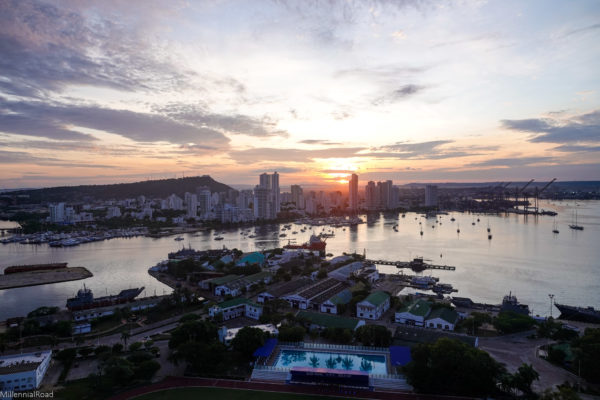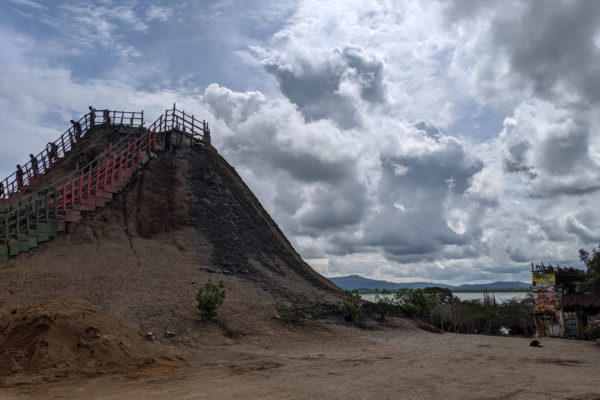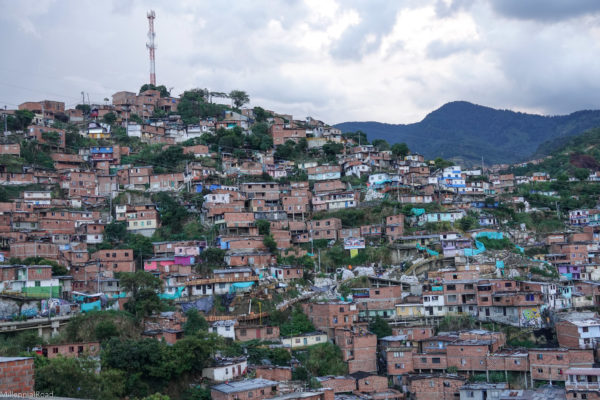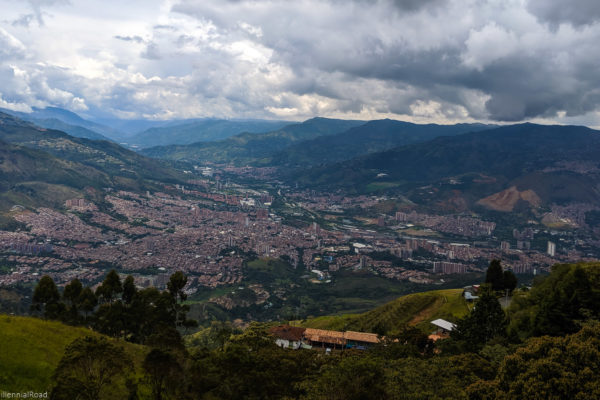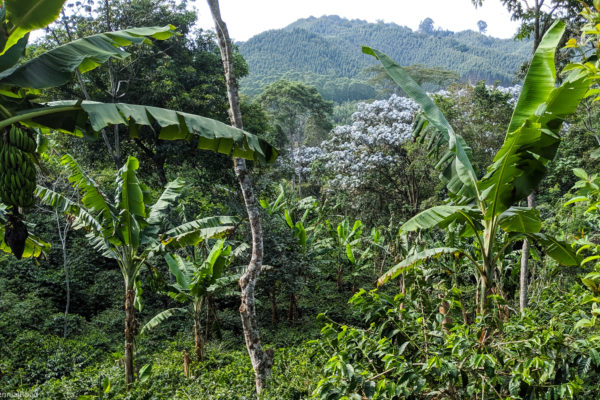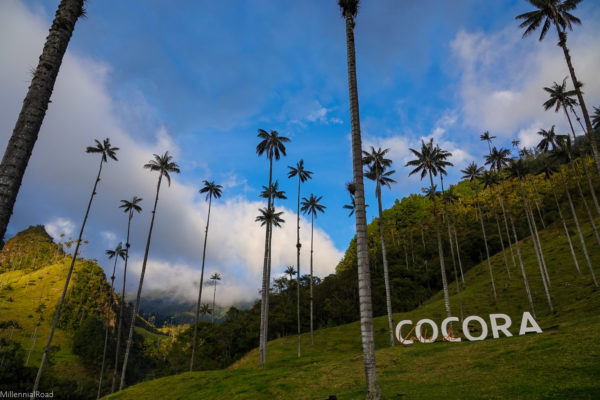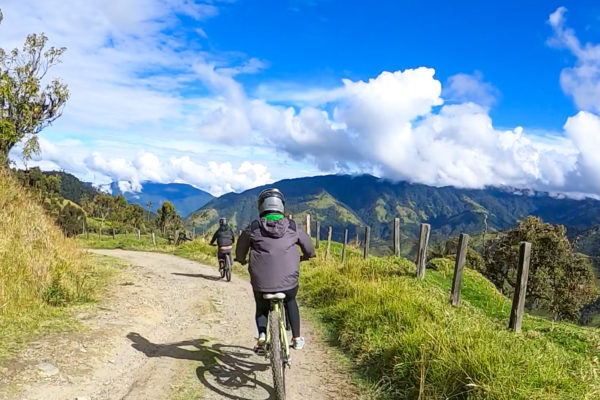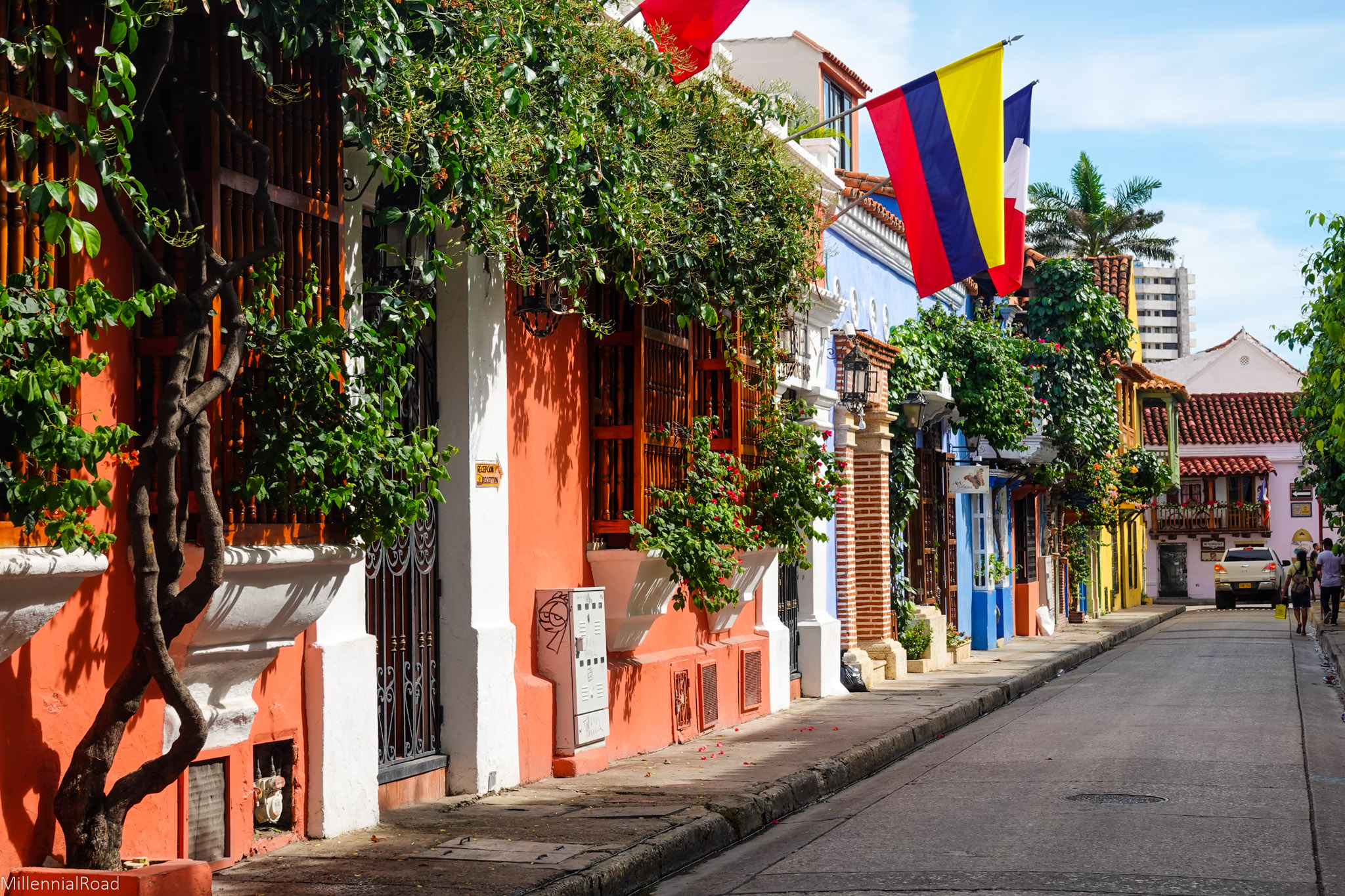
Colombia
Colombia, officially known as the Republic of Colombia, is a wonderfully diverse country which sits at the top of South America. It is the fourth largest country in South America, said to contain 10% of the entire planet’s biodiversity, and it was our first stop after leaving the U.S. on our world trip.
Click on a post below to read about our adventures in Colombia!
Understand
Colombia History & Facts
Colombia emerged from the dissolution of Gran Colombia in 1830 alongside Venezuela and Ecuador. More recently, decades of violent conflict between the Colombian government and antigovernment groups funded by drug trade has resulted in a humanitarian crisis for millions of civilians caught up in the conflict. However, a peace accord signed in 2016 marks the formal end to the conflict and aims to move the country forward toward a peaceful future.
| Total Area | 439,735 sq mi (91% land, 9% water) |
| Natural Resources | petroleum, natural gas, coal, iron ore, nickel, gold, copper, emeralds, hydropower |
| Population | 49.1 million (July 2020 est.) |
| Language | Spanish (official) |
| Literacy | 95.1% (2018) |
| Government Type | presidential republic |
| Flag | 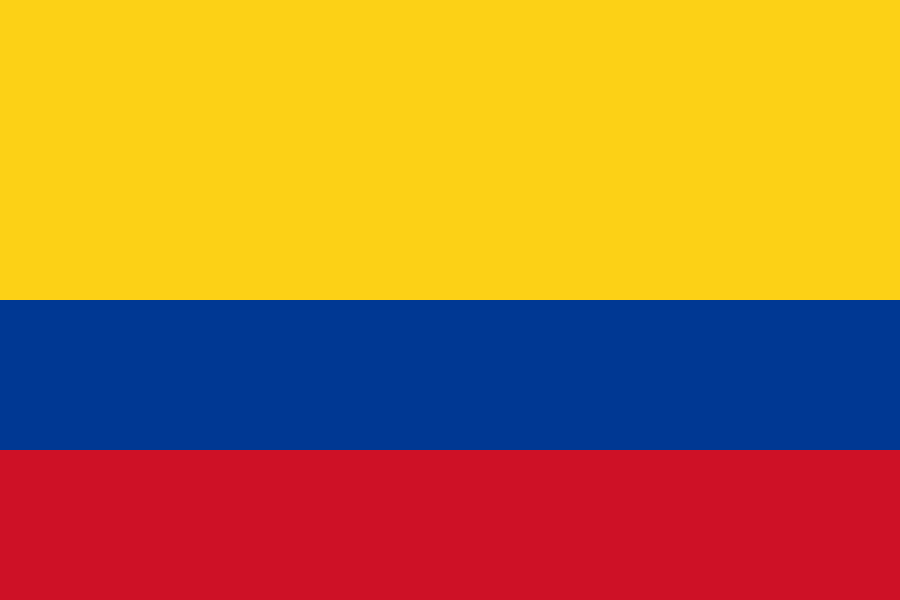 |
Colombia Cities & Regions
Colombia is situated in the northern portion of South America, bordering the Pacific Ocean between Panama and Ecuador, and bordering the Caribbean Sea, between Venezuela and Panama.
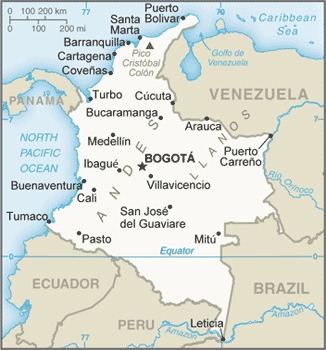
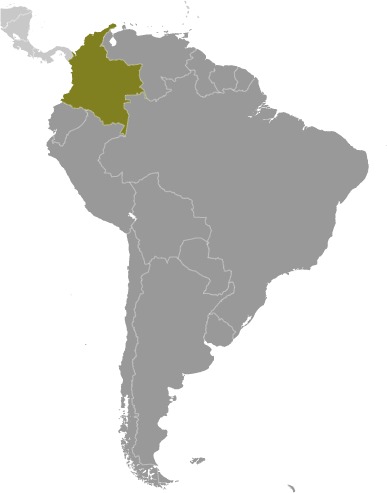
The capital of Colombia is Bogotá, a large city of over 8 million people situated up in the Andean mountain range. Here you can find excellent dining, world-class museums, interesting history and the melting pot of culture you would expect out of a big city.
Medellín is a city with a mixed past but bright future. It is the second largest city in Colombia with a population of nearly 3 million residents, and it is known as the “City of eternal spring” due to its remarkably pleasant climate. In the late 20th century, it was thought to be one of the most dangerous cities in the world as it was the home of the drug lord Pablo Escobar and the Medellín Cartel. However, residents have worked hard to move forward from this violent past and more recently the city is known for its innovations in urban living policies.
Along the Caribbean coast, some of the major cities include Cartagena, Santa Marta and Barranquilla. Cartagena is a popular tourist destination thanks to its interesting history and being an important port for cruise ships. The colonial architecture is a defining feature of Cartagena, and it creates a stunning contrast with the modern skyscrapers which have built up around the historical city. It is a UNESCO World Heritage Site due to having one of the most complete systems of military fortifications in South America and is an eminent example of military architecture in the 16th, 17th, and 18th centuries.
The climate in Colombia varies by region and elevation, with a tropical climate along the coast and eastern plains, and a cooler climate in the highlands.
Colombian People & Society
Colombia is the third most populous country in Latin America, with around 50 million people calling it home. The estimated ethnic makeup of Colombia in 2018 was 87.6% mestizo and white, 6.8% Afro-Colombian (includes mulatto, Raizal, and Palenquero), and 4.3% Amerindian.
In 2020, the urban population of Colombia was estimated at 81.4% of the total population, and increasing at 1.22% per year. This is because Colombia is in the midst of a large demographic shift as the country works to recover from the decades long internal conflict, which resulted in millions of Colombians emigrating to other countries and millions of others being internally displaced.
Like every other South American country, the majority of Colombians identify as Christians, and more specifically Catholics (as it was the only religion allowed during the colonial era). In 2014, it was estimated that 79% of Colombians were Roman Catholic, while another 14% practiced as Protestant.
Colombia’s Economic Overview
In 2019, the real GDP of Colombia was estimated at $741 billion, which is equal to a GDP per capita of $14,722.
The economy of Colombia is mainly dependent on the export of primary commodities, particularly, oil, coal, and coffee, all of which are subject to significant price volatility.
| Exports (2019 est.): | $61.697 billion |
| Export partners (2019) : | US 31%, China 11%, Panama 6% |
| Imports (2019 est.): | $87.072 billion |
| Import partners (2019): | US 27%, China 20%, Mexico 7%, Brazil 6% |
Travel and tourism is increasingly becoming an important industry, with a 2017 estimate claiming tourism provides 2% of Colombia’s GDP and 2.5% of total employment in the country.
However, in 2017 it was estimated that 28% of Colombians live below the poverty line. Progress is being made, but Colombia’s economic development is hampered by inadequate infrastructure, poverty, narcotrafficking, and an uncertain security situation.
Travel Tips for Colombia
| Power | 110 V / 60 Hz / Plug Types: A, B |
| Currency (Code) | Pesos (COP) |
| Road Driving Side | Right |
| International Driving Permit | Suggested; additionally, if you plan to drive in Colombia, you will need an Inter-American Driving Permit issued by the AAA |
| Visa/Authorization for travel | 90-day tourist visas are available without prior application for residents of 95 foreign countries |
| UK Travel Advice | Colombia travel advice |
| US State Department | Colombia country information |
| Local Emergency Number | 119 |
| Telephone code | 57 |
| Time zone (UTC) | UTC-5 |
| Official tourism board | colombia.travel/en |
| Drinking Water | Opt for bottled water |
Colombia Laws & Safety
U.S. Embassy in Bogota:
- https://co.usembassy.gov/embassy/bogota/
- Phone: (+57) 275-2000
- Address: Carrera 45 No. 24B-27 Bogotá, D.C. Colombia
Vaccines/Immunizations
Colombia requires yellow fever vaccine for travelers arriving from Brazil, Uganda, Congo, and Angola, administered at least ten days before entry to Colombia. Vaccination documentation must appear on a yellow WHO immunization card.
Other countries require yellow fever vaccine for travelers coming from Colombia.
The following mosquito-borne diseases are prevalent in certain regions of Colombia: Chikungunya; Dengue; Malaria; Yellow fever; and Zika.
LGBT Travellers
Colombia has an existing anti-discrimination law which prohibits discrimination based on gender, disability, sexual orientation, gender identity, or social status. But even though there are no legal restrictions on same-sex sexual relations or the organization of LGBT+ events in Colombia, there are reports that the authorities do not always enforce the legal prohibitions on discrimination.
Transportation in Colombia
As you can see from the map below, Colombia is a big country, so planning out your travel is very important. In addition to the size of the country, mountainous terrain and rough roads can make a seemingly short drive take much longer. If you can fit it in your budget, flying is the best option for traveling between the major cities.
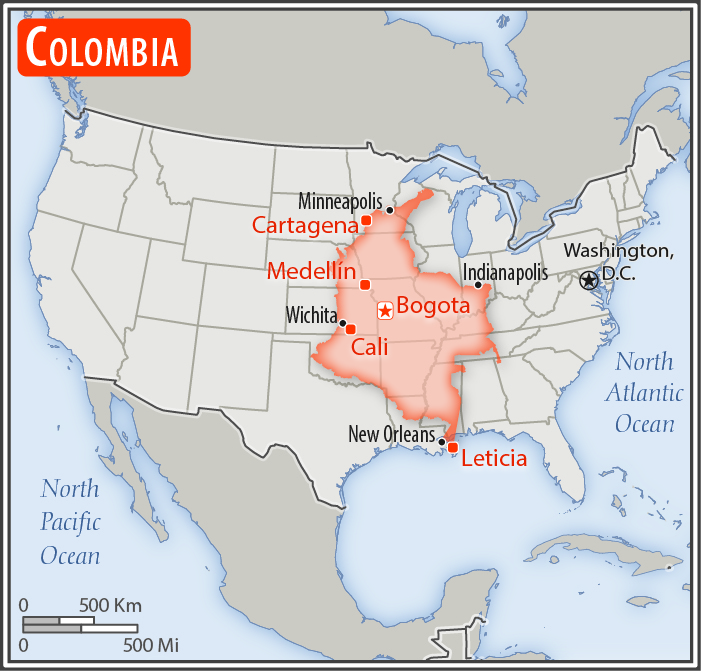
Aviation
The Federal Aviation Authority’s International Aviation Safety Assessment (IASA) program rates Colombia as Category 1, indicating it meets International Civil Aviation Organization (ICAO) standards.
El Dorado International Airport (BOG) is located in Bogotá and is the largest airport in the country.
José María Córdova International Airport (MDE) is located in Rionegro, approximately one hour east of Medellín. It is the second largest airport in Colombia.
Taxis are available, but passengers need to exercise caution. Do not flag down taxis on the street or accept rides from strangers. Taxis should be called via phone or web app or taken from a taxi stand. Airports, hotels, and some restaurants/shopping centers have taxi stands or will call taxis for customers.
Public buses are popular across the country, but serious accidents involving inter-city buses are common.
Accommodation in Colombia
In major cities in Colombia, there is no shortage of accommodation options, with international hotel chains as well as boutique and independent hotels.
Vacation rentals are a popular option in Colombia as well, and we had no problem finding great places in every city we visited using AirBnb.
For as much natural beauty that exists in Colombia, the camping infrastructure is not as developed as many other countries. However, there are certain places where camping is available such as in Tayrona Natural National Park near Santa Marta.
Colombian Food & Drink
Popular Local Dishes to Try
- Empanadas are one of the most popular snacks in Colombia.
- Bandeja Paisa is one of the most popular dishes in Colombia.
- Ajiaco is a soup that originated in Bogotá.
- Chocolate con Queso (or hot chocolate with cheese) is a popular drink on the colder days.
- Tajadas de Plátano make a great side dish.
- Tostones (also known as Patacones) are twice fried plantain popular in Latin America.
- Aguardiente (roughly translated to English as “firewater”) is an anise-flavoured liqueur derived from sugar cane and is the national drink of Colombia.
Colombian Culture & Experiences
Tipping in Colombia is only common at restaurants and hotels, and usually not expected anywhere else. At popular restaraunts, it is common to see a 10% “propina” charge included on your bill, but at smaller restaurants it is customary to leave the tip in cash at the table.
Colombia is full of unique and beautiful flowers, and it is the world’s second largest exporter of cut flowers. When giving flowers in Colombia, roses are well-received, but due to their association with funerals marigolds and lilies are disliked.
According to data from the Colombian government from 2006, only 4% of the population in Colombian speaks english. While this number has likely increased materially since that time, it can be difficult to find people who speak english when traveling outside of touristy areas.
Itineraries & Guides
Other Popular Tourist Destinations in Colombia:
- Salt Cathedral
- Tayrona National Park
- Monserrate
- Santuario de Las Lajas
- Los Nevados National Park
- Cano Cristales
- Qhapaq Nan/Andean Road System
- San Agustin Archaeological Park
- National Archeological Park of Tierradentro

